In laboratories, precision, accuracy, and reliability are paramount. Whether it’s for pharmaceutical research, chemical experiments, or small-scale production, laboratory filling machines play a crucial role in ensuring that liquids, powders, or other substances are accurately measured and filled into containers. These machines are designed to meet the unique demands of laboratory environments, where even the smallest discrepancy can have significant consequences. In this article, we will explore the different types of filling machines used in laboratories, their applications, and the importance of selecting the right equipment for your specific needs.
1. Introduction to Laboratory Filling Machines
Laboratory filling machines are specialized equipment designed to handle small-scale filling operations with high precision. Unlike industrial filling machines, which are built for large-scale production, laboratory filling machines are compact, versatile, and capable of handling a wide range of substances, including liquids, powders, and even highly viscous materials.
These machines are commonly used in various industries, such as:
○ Pharmaceuticals: For filling small batches of drugs or samples during research and development.
○ Biotechnology: For precise filling of biological samples or reagents.
○ Chemical Labs: For handling hazardous or corrosive substances.
○ Food and Beverage Labs: For testing and sampling new products.
The key features of laboratory filling machines include:
○ Accuracy: Ability to fill containers with minimal error margins.
○ Flexibility: Capacity to handle different types of substances and container sizes.
○ Ease of Use: User-friendly interfaces for operators with varying levels of expertise.
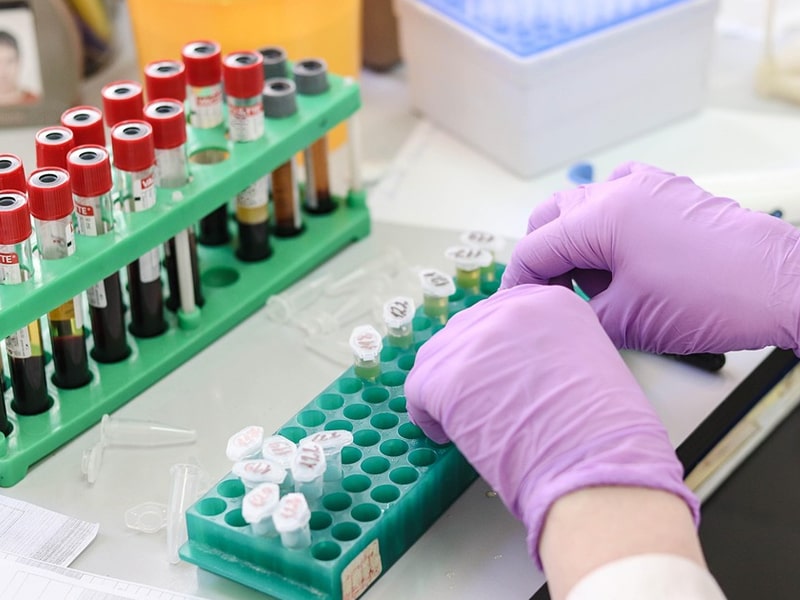
2. Types of Laboratory Filling Machines
There are several types of laboratory filling machines, each designed for specific applications. Below, we will explore the most common types:
a. Liquid Filling Machines
Liquid filling machines are the most widely used type of laboratory filling machines. They are designed to fill liquids into vials, bottles, or other containers with high accuracy. These machines are particularly useful in pharmaceutical and biotechnological laboratories where precise dosing is critical.
Key features of liquid filling machines:
○ Dosing Accuracy: Many models offer adjustable fill volumes, allowing users to set the exact amount of liquid to be dispensed.
○ Compliance with GMP: Many liquid filling machines are designed to comply with Good Manufacturing Practices (GMP), making them suitable for use in regulated environments.
○ Material Compatibility: These machines are often constructed with materials that are resistant to corrosion and compatible with a wide range of chemicals.
b. Pharmaceutical Filling Machines
Pharmaceutical filling machines are a specialized category of laboratory filling machines designed specifically for the pharmaceutical industry. These machines are used for filling drug products, such as injectables, vaccines, and ointments, into sterile containers. Pharmaceutical filling machines are known for their high precision, sterility, and compliance with stringent regulatory standards.
Features of pharmaceutical filling machines:
○ Sterile Filling: Many models are equipped with features that ensure the filling process takes place in a sterile environment, minimizing the risk of contamination.
○ High-Speed Filling: While laboratory filling machines are generally smaller in scale, some pharmaceutical filling machines can handle high-speed filling for larger batches.
○ Integration with Capping and Sealing Machines: Many pharmaceutical filling machines are part of a complete packaging line, including capping machines and sealing machines for a fully automated process.
c. Small Dose Filling Machines
Small dose filling machines are designed for applications where very small amounts of a substance need to be filled into containers. These machines are particularly useful in laboratory settings where precise micro-dosing is required, such as in drug development, clinical trials, and small-scale production.
Key features of small dose filling machines:
○ Micro-Dosing Capability: These machines can fill containers with volumes as small as a few microliters, making them ideal for applications where precision is critical.
○ Automation: Many small dose filling machines are fully automated, reducing the risk of human error and increasing efficiency.
○ Versatility: Despite their focus on small doses, these machines are often versatile enough to handle a variety of container types and sizes.
d. Capping Machines
Capping machines are not filling machines per se, but they are often used in conjunction with laboratory filling machines to complete the packaging process. Capping machines are used to securely close filled containers with caps or seals, ensuring the integrity of the product inside.
Types of capping machines:
○ Automatic Capping Machines: These machines are fully automated and can cap multiple containers per minute.
○ Semi-Automatic Capping Machines: These machines require some manual intervention but are still faster and more precise than manual capping.
○ Handheld Capping Machines: These are small, portable devices used for capping a few containers at a time.
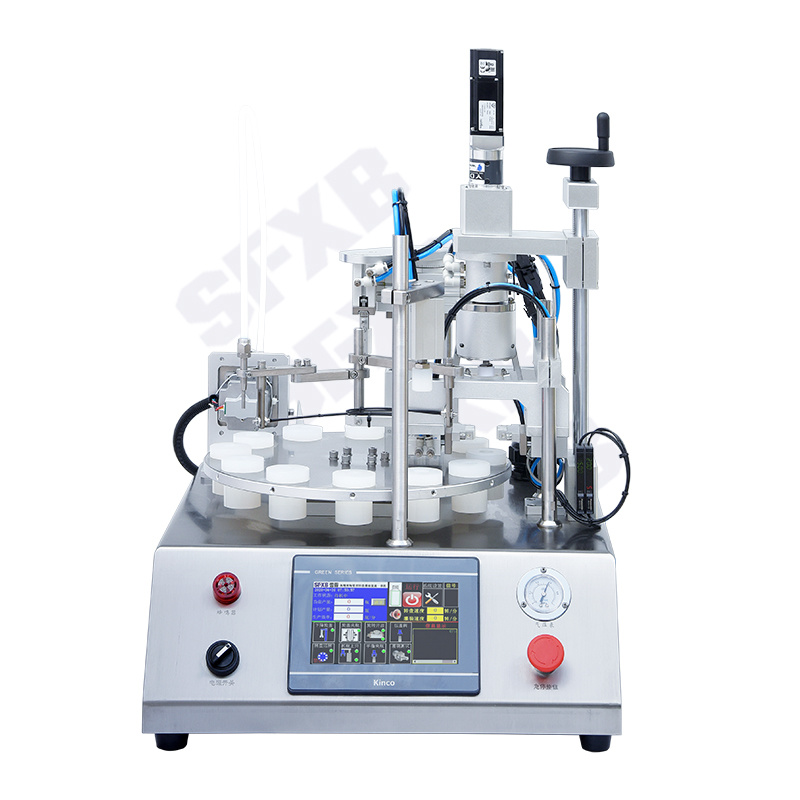 |
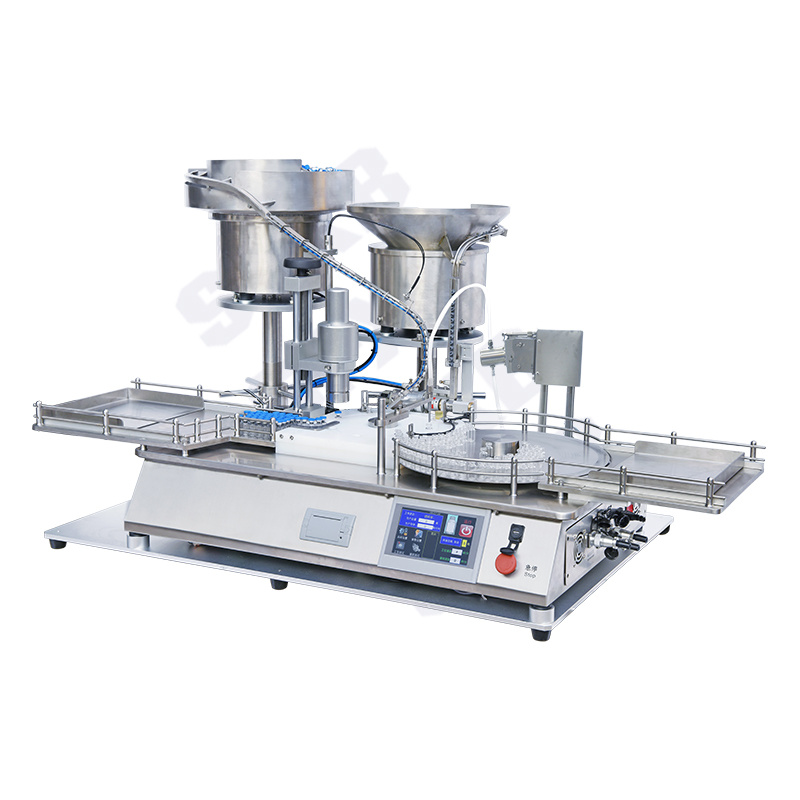 |
e. Sealing Machines
Sealing machines are another type of equipment that is often used alongside laboratory filling machines. Sealing machines are used to hermetically seal containers, ensuring that the contents are protected from contamination and spoilage. Sealing machines can be used for plastic containers, glass vials, or even pouches.
Key features of sealing machines:
○ Heat Sealing: Many laboratory sealing machines use heat to create a secure seal on plastic containers.
○ Induction Sealing: This type of sealing uses electromagnetic induction to create a seal, often used for aluminum foil seals on bottles.
○ Ultrasonic Sealing: This method uses high-frequency sound waves to create a weld between the container and the seal.
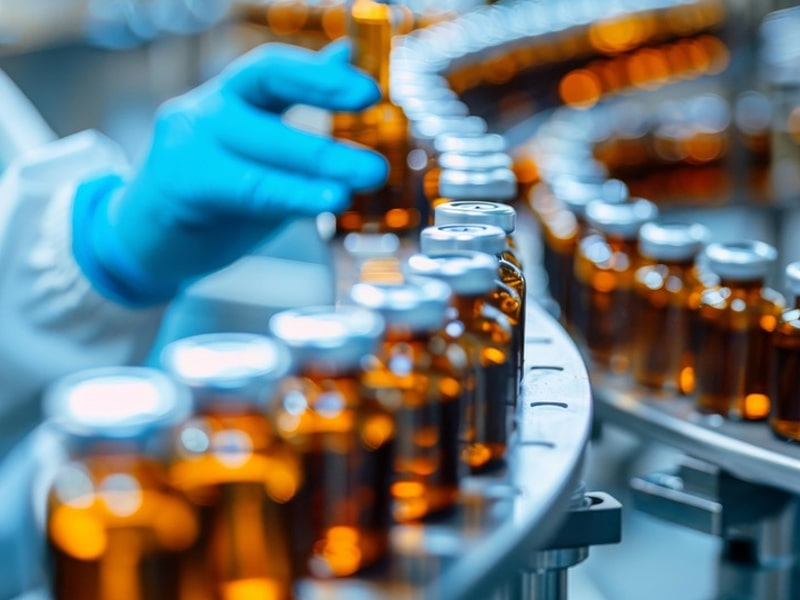
3. Applications of Laboratory Filling Machines
Laboratory filling machines are used in a variety of applications across different industries. Below are some of the most common uses:
a. Pharmaceutical Research and Development
In pharmaceutical research and development, laboratory filling machines are used to fill small batches of drugs for testing and clinical trials. These machines are essential for ensuring that each vial or bottle contains the exact amount of the active ingredient, which is critical for accurate testing.
b. Biotechnology Labs
In biotechnology labs, laboratory filling machines are used to handle biological samples, such as DNA, proteins, and enzymes. These machines are designed to work with sensitive materials and often include features that prevent contamination.
c. Chemical Laboratories
In chemical laboratories, laboratory filling machines are used to handle hazardous or corrosive substances. These machines are often made with materials that are resistant to chemicals and can withstand harsh laboratory conditions.
d. Food and Beverage Labs
In food and beverage laboratories, laboratory filling machines are used for testing and sampling new products. For example, a small dose filling machine may be used to fill sample bottles with a new flavor of sauce or dressing.
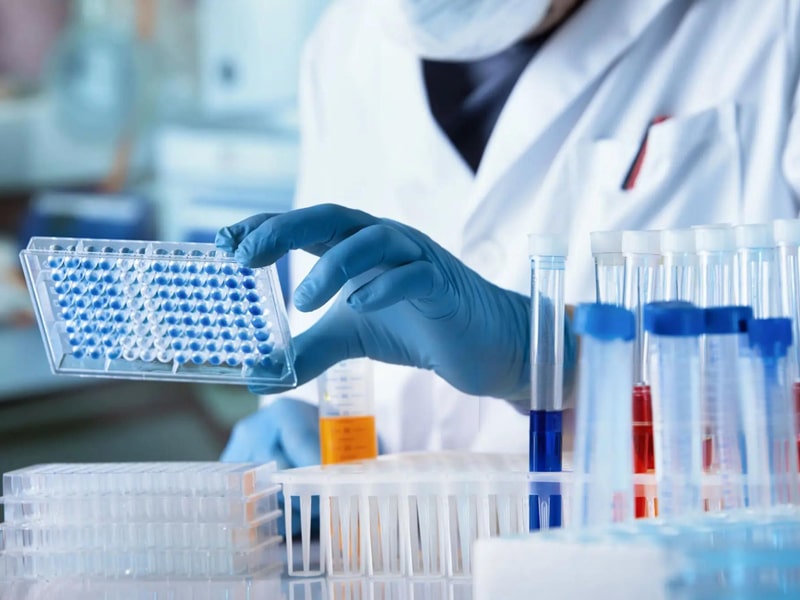
4. How to Choose the Right Laboratory Filling Machine
With so many types of laboratory filling machines available, choosing the right one for your needs can be challenging. Below are some factors to consider when selecting a laboratory filling machine:
a. Type of Substance
The type of substance you are working with is one of the most important factors to consider. For example:
○ Liquids: If you are working with liquids, you will need a liquid filling machine that is compatible with the viscosity and chemical properties of the liquid.
○ Powders: For powders, you may need a powder filling machine that is designed to handle dry substances.
○ High-Viscosity Substances: For substances like gels or pastes, you may need a machine with a higher force output to ensure accurate filling.
b. Fill Volume
The fill volume refers to the amount of substance that the machine can dispense into a container. If you need to fill very small volumes, you may require a small dose filling machine. Conversely, if you need to fill larger volumes, you may need a machine with adjustable fill settings.
c. Automation Level
Laboratory filling machines can range from fully manual to fully automatic. If you are working with a high volume of containers, an automatic machine may be more efficient. However, if you only need to fill a few containers at a time, a manual or semi-automatic machine may be more cost-effective.
d. Compliance and Certification
If you are working in a regulated industry, such as pharmaceuticals or biotechnology, you may need a machine that complies with specific standards, such as GMP or ISO certifications. Look for machines that are designed with these standards in mind.
e. Compatibility with Containers
The type of container you are using is another important factor. Some laboratory filling machines are designed to work with specific types of containers, such as glass vials, plastic bottles, or pouches. Make sure the machine you choose is compatible with your containers.
f. Budget
Finally, consider your budget. Laboratory filling machines can range in price from a few hundred dollars to tens of thousands of dollars, depending on their features and capabilities. Set a budget and look for machines that meet your needs within that range.
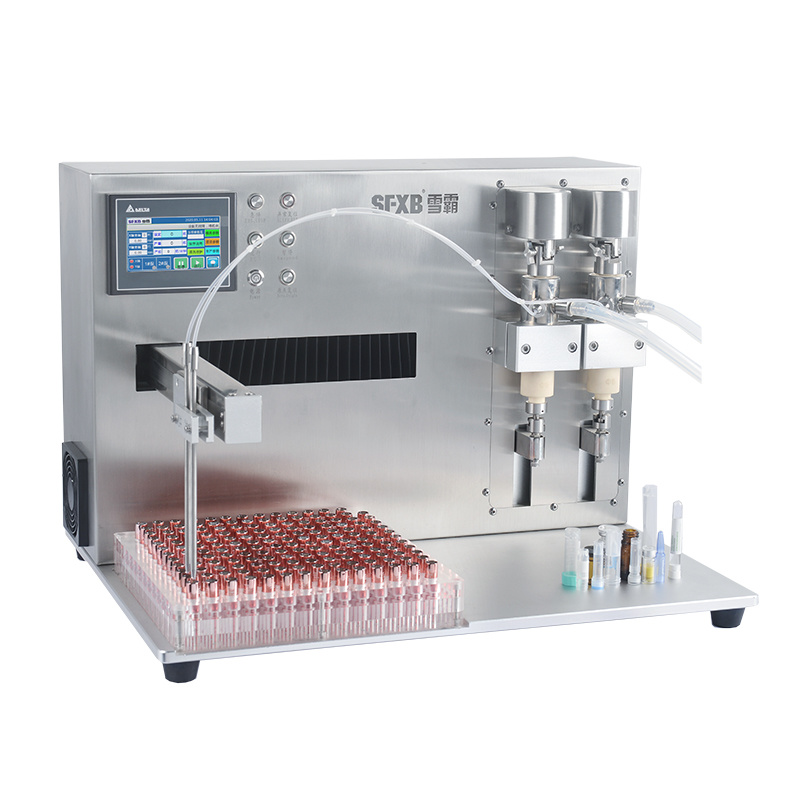 |
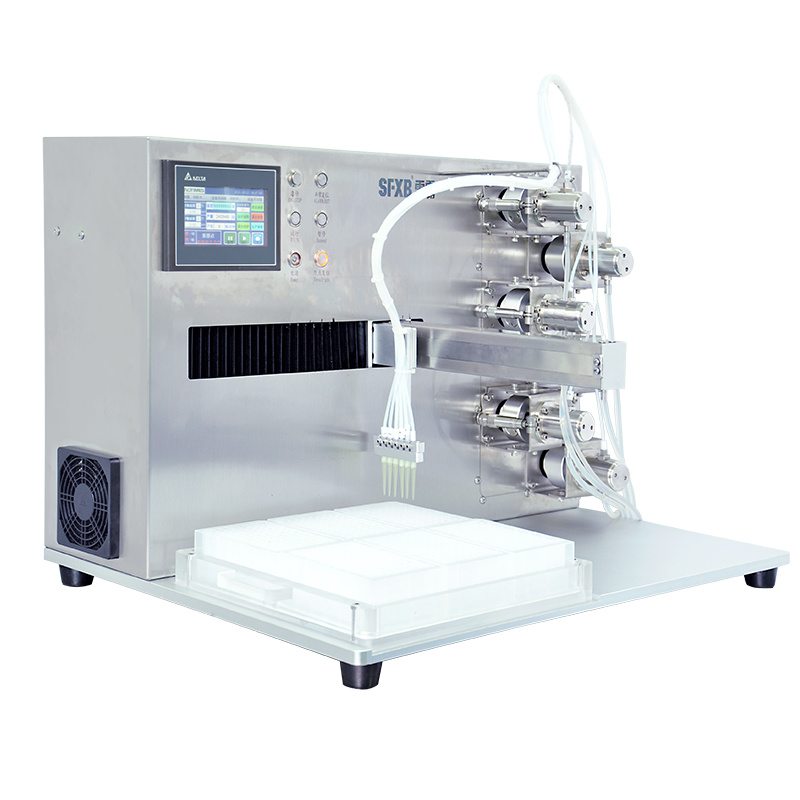 |
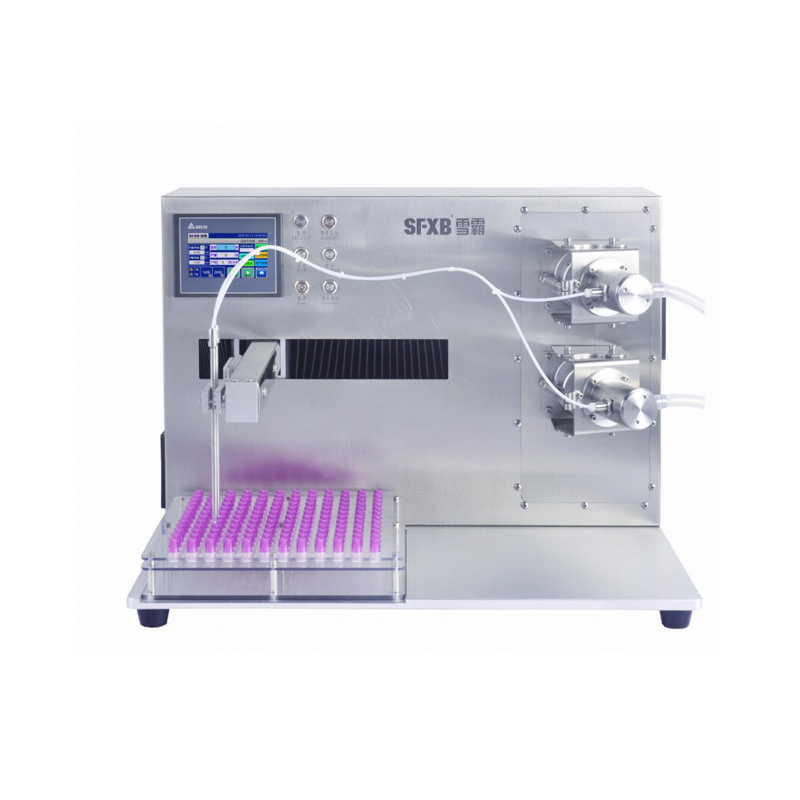 |
| XBZXY-2 matrix high precision rotary valve plunger ceramic pump filling machine | XBWXY-6 Matrix High Precision Valveless Ceramic Pump Filling Machine | Matrix High Precision Valveless Ceramic Pump Filling Machine |
| Scope Of Application: *Scientific research institutes, laboratories, universities, pharmaceutical factories, IVD enterprises, cosmetics factories, etc.; *Widely used in the precise quantitative filling of pharmaceutical, pharmaceutical, food, chemical, cosmetic and other industries; *Preparation of solutions before chromatography, QC and R&D of pharmaceutical factories, environmental monitoring, mineral and blood analysis, forensic identification and various other applications; *Precise and quantitative filling of liquids such as blood, biological reagents, oral liquids, injections, high-end cosmetics, electronic cigarette oil, flavors, and fungicides. |
||
5. Maintenance and Calibration of Laboratory Filling Machines
To ensure optimal performance, laboratory filling machines require regular maintenance and calibration. Below are some tips for maintaining your machine:
a. Follow the Manufacturer’s Instructions
Always follow the maintenance and calibration instructions provided by the manufacturer. These instructions are designed to help you keep the machine in good working order and ensure accurate filling.
b. Clean the Machine Regularly
Laboratory filling machines should be cleaned regularly to prevent contamination and ensure accurate filling. Use cleaning solutions that are compatible with the materials of the machine and the substances you are working with.
c. Check for Wear and Tear
Over time, parts of the machine may wear out, which can affect its performance. Regularly inspect the machine for signs of wear and tear, and replace any worn-out parts promptly.
d. Calibrate the Machine
Regular calibration is essential for maintaining the accuracy of the machine. Calibration involves adjusting the machine to ensure that it is dispensing the correct volume of substance. If you are unsure how to calibrate the machine, refer to the manufacturer’s instructions or contact a professional.
6. The Importance of Capping and Sealing Machines in Laboratories
While filling machines are essential for dispensing substances into containers, capping and sealing machines are equally important for ensuring the integrity of the filled containers. A well-sealed container prevents contamination, spoilage, and leakage, ensuring that the contents remain safe and effective.
a. Capping Machines
Capping machines are used to securely fasten caps onto filled containers. These machines are available in different types, including automatic, semi-automatic, and handheld models. When choosing a capping machine, consider the type of cap you are using, the size of the containers, and the level of automation you need.
b. Sealing Machines
Sealing machines are used to hermetically seal containers, creating a tight barrier that prevents air, moisture, and contaminants from entering the container. Sealing machines are available for different types of containers, including plastic bottles, glass vials, and pouches. Some common types of sealing machines include heat sealers, induction sealers, and ultrasonic sealers.
c. Integration with Filling Machines
In many laboratory settings, capping and sealing machines are integrated with filling machines as part of a complete packaging line. This integration streamlines the packaging process, reducing the risk of human error and increasing efficiency. When selecting a filling machine, consider whether it can be easily integrated with capping and sealing machines.
7. Trends in Laboratory Filling Machines
The laboratory filling machine market is constantly evolving, with new technologies and innovations being introduced regularly. Below are some of the current trends in laboratory filling machines:
a. Automation and Robotics
Automation and robotics are playing an increasingly important role in laboratory filling machines. Automated machines are faster, more precise, and require less manual intervention, making them ideal for high-volume laboratories.
b. Miniaturization
There is a growing trend towards smaller, more compact laboratory filling machines. These machines are ideal for small laboratories or for use in applications where space is limited.
c. Increased Precision
As laboratory applications become more sophisticated, there is a greater demand for filling machines with increased precision. Small dose filling machines, in particular, are in high demand for their ability to fill very small volumes with high accuracy.
d. Sustainability
There is also a growing trend towards sustainability in laboratory filling machines. Many manufacturers are now offering machines that are energy-efficient and made with eco-friendly materials.
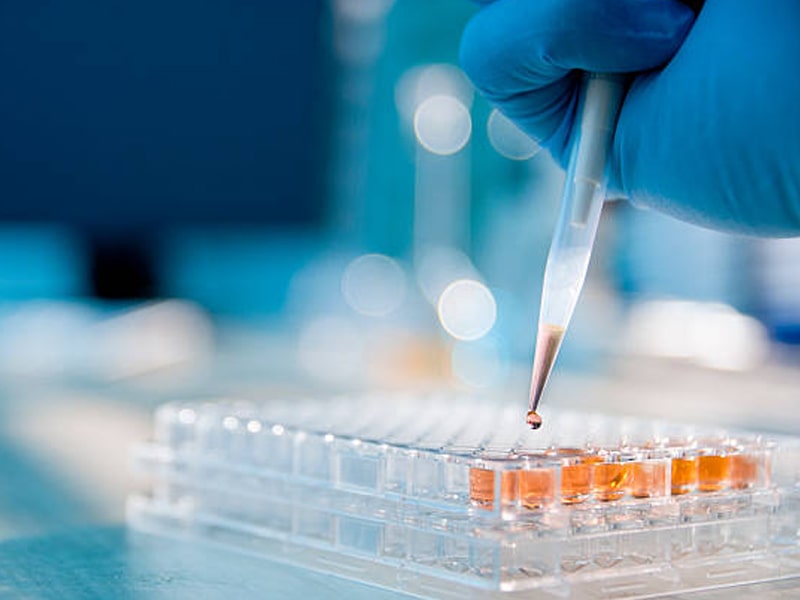
8. Conclusion
Laboratory filling machines are essential tools for any laboratory that requires precise and accurate filling of substances into containers. Whether you are working with liquids, powders, or small doses, there is a laboratory filling machine designed to meet your needs. By understanding the different types of machines available, their applications, and the factors to consider when selecting a machine, you can choose the right equipment for your laboratory and ensure that your operations are efficient, accurate, and compliant with regulatory standards.
Additionally, don’t forget the importance of capping and sealing machines in the laboratory setting. These machines work hand in hand with filling machines to ensure that your filled containers are securely closed and protected from contamination.
When shopping for a laboratory filling machine, consider your specific needs, budget, and the level of precision required. With the right machine, you can take your laboratory operations to the next level and achieve the accuracy and efficiency you need.
| References: | |
| 1. | ”Automation and Robotics in Laboratory Equipment” – Journal of Laboratory Automation |
| 2. | “Sterile Filling Technologies for Biopharmaceuticals” –Retrieved from: BioProcess International |
| 3. | ”Laboratory-Scale Aseptic Filling Systems: Design and Validation” – Journal of Validation Technology |
| 4. | ”Fluid Handling in Laboratory Automation” – Lab Manager Magazine |


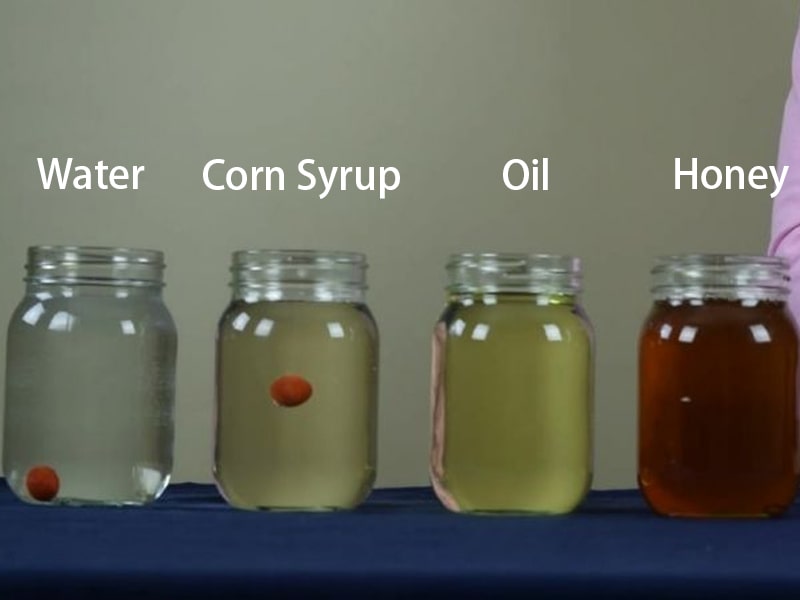

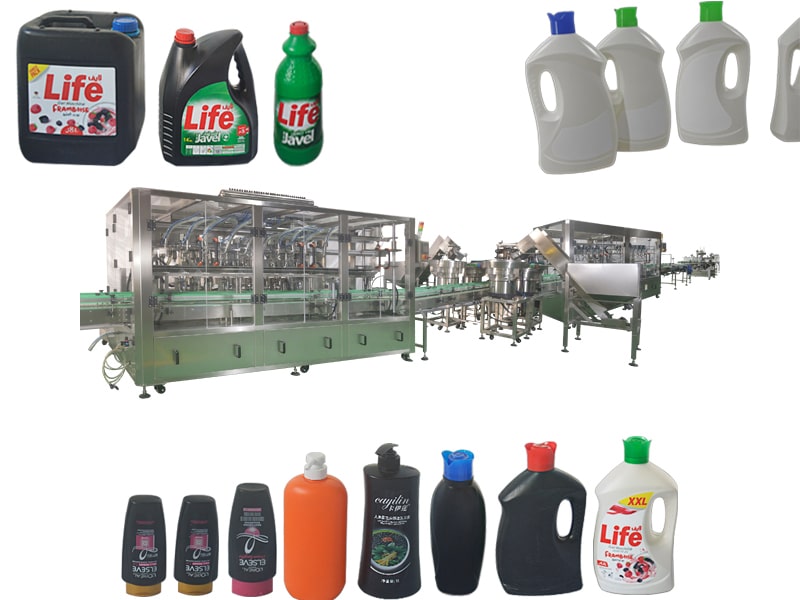

Comments